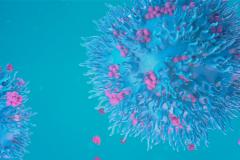British Columbia’s first Concussion Awareness Week, Sept. 26 to Oct. 2, 2021, aims to raise awareness about concussions and encourage everyone to learn how to prevent, recognize, respond to and manage this invisible injury. An official proclamation has been made by the B.C. government, signed by the Attorney General and Minister Responsible for Housing, and the lieutenant governor. This campaign is part of a national initiative with events taking place across the country.

Concussions are the most common form of brain injury. They are caused by an impact or forceful motion of the head or other part of the body, resulting in rapid movement of the brain within the skull. Research shows that long-term consequences can result if a concussion is not recognized, is ignored or mismanaged. Returning to regular activities too early can prolong symptoms, lead to complications and increase the risk of sustaining another concussion.
"When well-managed, approximately 70 to 85 per cent of concussions will resolve without complication,”
said Dr. Shelina Babul, associate director and sports injury specialist for the BC Injury Research and Prevention Unit at BC Children’s Hospital, and clinical associate professor at the faculty of medicine at the University of British Columbia (UBC). “That’s why we want British Columbians to know how to recognize concussions, what to do should one occur and know where to find credible and up-to-date information.”
Dr. Babul led the creation of the Concussion Awareness Training Tool (CATT), a series of online educational modules and resources with the goal of increasing knowledge and awareness of concussion recognition, response, diagnosis, treatment and management. CATT includes free e-learning modules and other concussion resources for groups that include sport coaches and players, medical and social work professionals, parents, teachers and more. The tool is mandated by B.C. universities, including UBC and UBC-Okanagan, the University of Northern British Columbia and the University of Victoria, as well as provincial sports organizations, including BC Hockey and BC School Sports.
B.C.’s Concussion Awareness Week overlaps with Ontario’s Rowan’s Law Day which will be held on Sept. 29 to honour the memory of Rowan Stringer. Rowan was a 17-year-old Ottawa high school rugby player who died in 2013 from several concussions sustained over a few days, which led to a rare condition known as Second Impact Syndrome (catastrophic swelling of the brain).
Concussion Facts:
- Concussions can happen to anyone, anywhere, and at any time.
- Concussions are the most common form of brain injury caused by an impact or forceful motion of the head or other part of the body, resulting in rapid movement of the brain within the skull.
- Each year in B.C., almost 600 people are hospitalized for a concussion, and approximately 14,500 visit the emergency department. That number is likely an underestimate of the true burden of concussion – this “invisible injury” is under-reported due to a lack of public education and awareness.
- Most concussions DO NOT include a loss of consciousness. Loss of consciousness occurs in less than 10 per cent of diagnosed concussions.
- Concussions can be caused by falls (for example, young children in the home), sports, recreational activities and during travel (for example, crashes involving cyclists, pedestrians or motor vehicles).
- Concussions require immediate recognition followed by 48 hours of physical and cognitive rest.
Know what to do if you witness a potential concussion-causing incident, view the CATT Concussion Pathway




